

More than 50,000 frosted-glass lights have transformed the Australian outback after being installed in an area the size of four football fields, as part of one artist's 24-year-long dream to create a physical symbol of 'the good things in life'.
The mesmerising display of lights - which are solar powered and grow brighter as the daylight fades - was created by artist Bruce Munro, and is his largest piece of work to date. Lit-up pathways allow visitors to walk to the installation, which will come to life under the stars each night, for an entire year.
Munro, who is best known for producing iconic light-based installations such as CD Sea in Wiltshere, said he first conceived the idea for the Field of Light while visiting Uluru in 1992. He created and toured the project first in locations across the UK, the US and Mexico and is now finally able to showcase the idea where it was formulated.
The tens of thousands of light stems, which weigh in total approximately 15 tonnes, were transported to the country by Qantas. The airline helped to fly the lights more than 11,800 miles over 32 international and domestic flights to Australia - the farthest a piece of Munro's artwork has travelled to an exhibition.
The Field of Light Uluru will open at the Ayers Rock Resort on April 1. The exhibition, which is officially named Tili Wiru Tjuta Nyakutjaku which translates from local Aboriginal language, Pitjantjatjara, as 'looking at lots of beautiful lights' will be in place for a year throughout the desert, and will close on 31 March 2017.
Munro, who said that his motive for the project is to create an emotional response explained: 'Field of Light was one idea that landed in my sketchbook and kept on nagging at me to be done. I saw in my mind a landscape of illuminated stems that, like the dormant seed in a dry desert, quietly wait until darkness falls, under a blazing blanket of southern stars, to bloom with gentle rhythms of light. Field of Light is a personal symbol for the good things in life.'
Unesco World Heritage site Uluru is part of the Uluṟu-Kata Tjuṯa National Park and is sacred to the Aboriginal people of the area known as the Anangu. The Aṉangu believe their land is inhabited by spirits of ancestral creator beings, who formed its stunning landscape.
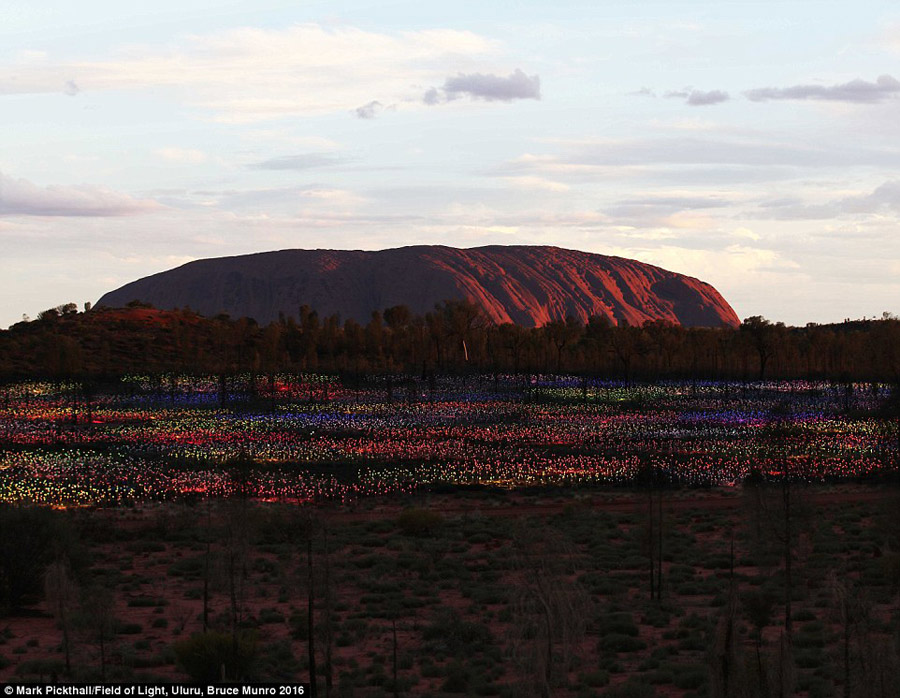
Internationally recognised artist Bruce Munro’s immersive installation, Field of Light Uluru, opens 1 April at Ayers Rock Resort in the spiritual heart of Australia.

The art is being being installed in an area the size of four football fields, as part of one artist's 24-year-long dream to create a physical symbol of 'the good things in life'.
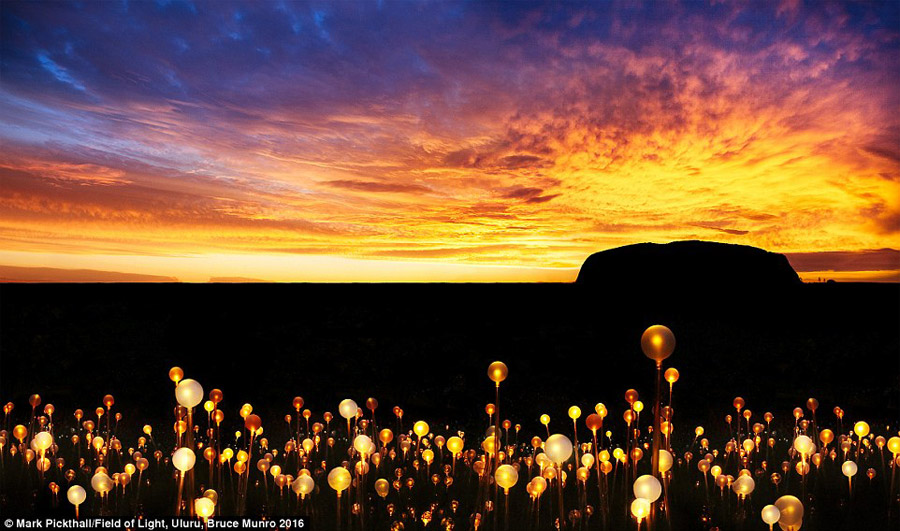
In keeping with the desert’s vast scale this is Munro’s largest work to date. There are more than 50,000 slender stems crowned with radiant frosted-glass spheres.
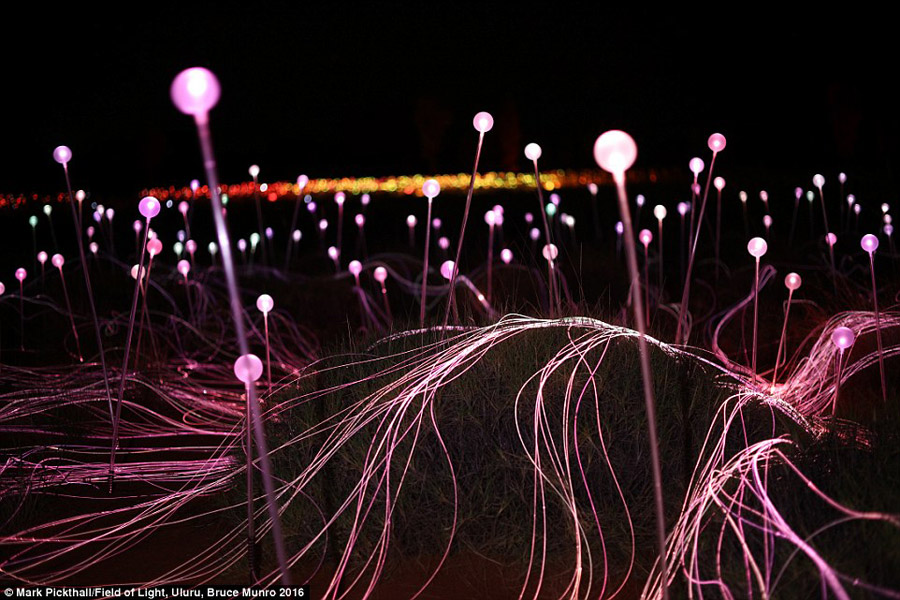
The Field of Light is also the artist’s first work to be illuminated through solar power. The spheres, connected via illuminated optical fibre, will bloom as darkness falls.
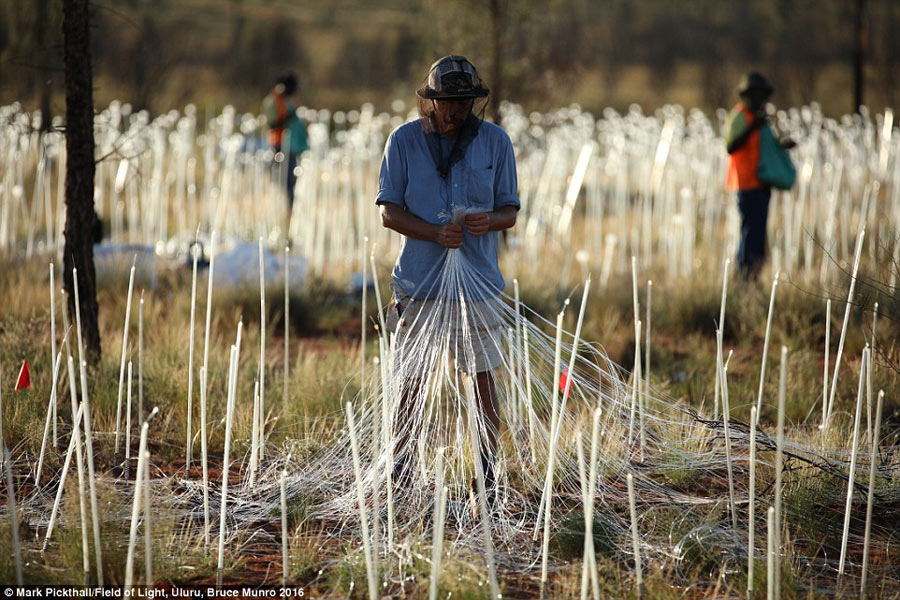
British artist Bruce Munro is best known for producing iconic light-based installations across the world including CD Sea in Wiltshere.
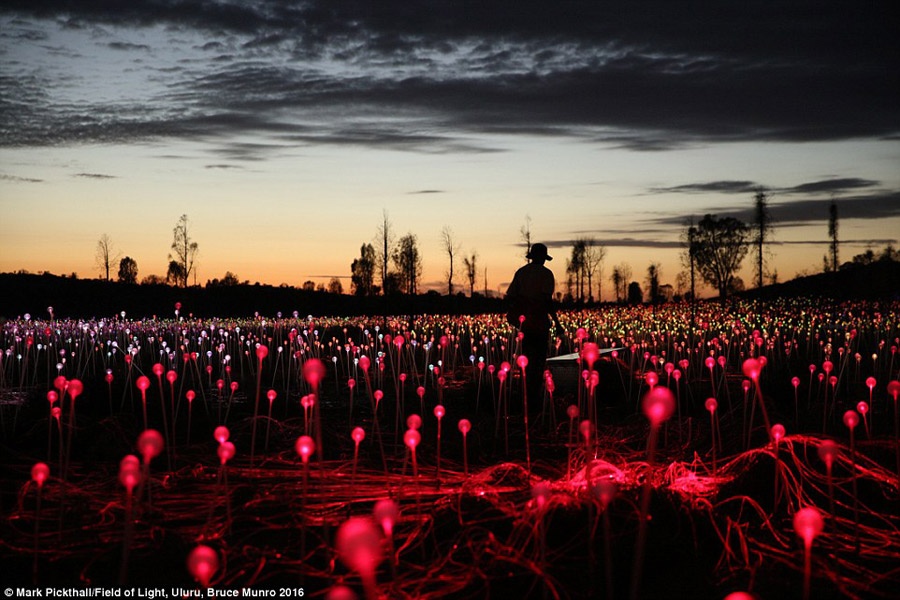
Munro conceived the idea for the Field of Light while visiting Uluru in 1992, but it wasn’t until 2004 that the artist was first able to create it in a field behind his home.
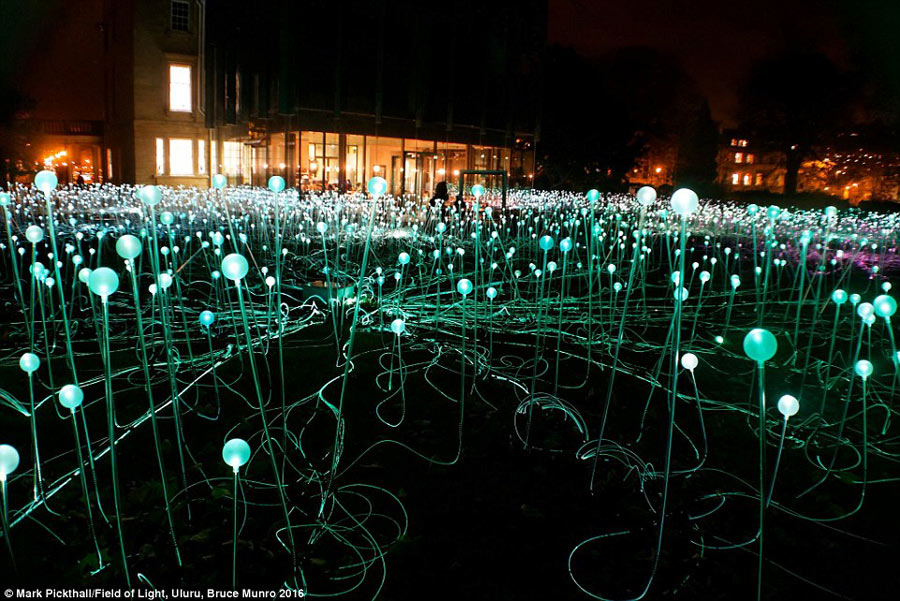
Describing the project, Munro said: 'Field of Light was one idea that landed in my sketchbook and kept on nagging at me to be done'.
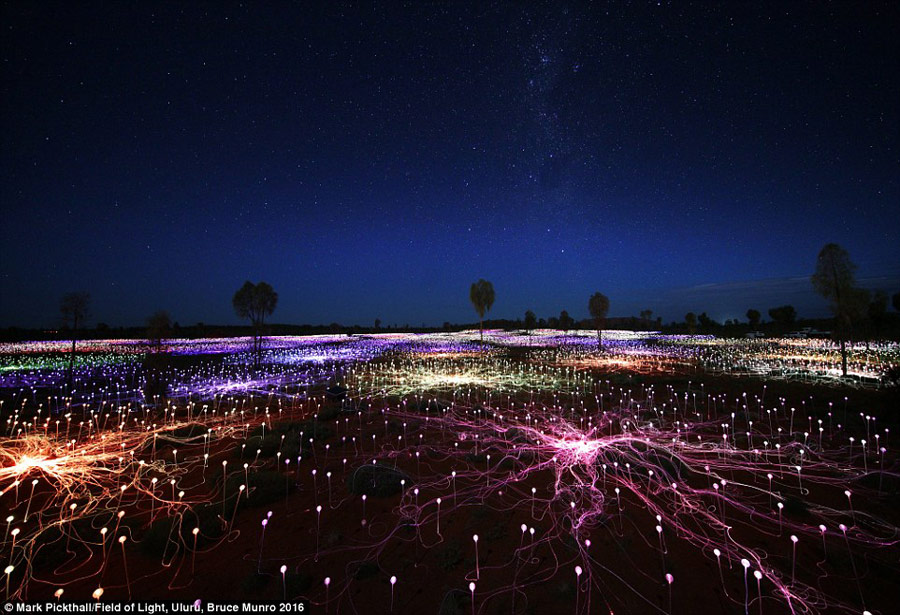
The artist said he is both honoured and privileged to create an iteration of this artwork for the place that inspired it in 1992.
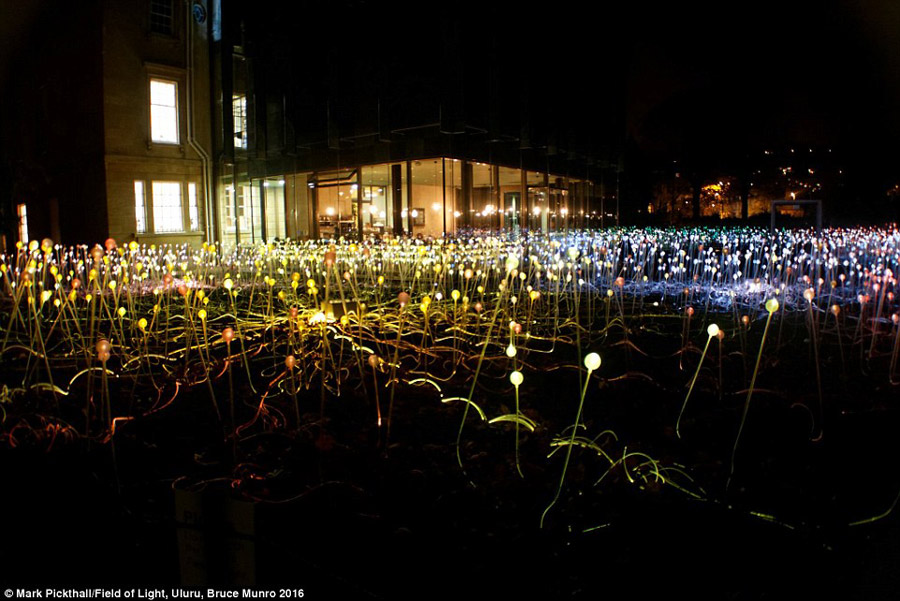
Guests to Ayers Rock Resort can experience the installation in a number of ways, with options including a two hour visit.
Day|Week

 Kenyan woman's crappy photoshopped pictures make her a web celebrity
Kenyan woman's crappy photoshopped pictures make her a web celebrity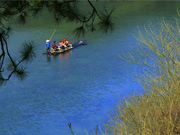 Magnificent view of E. China's Anhui province
Magnificent view of E. China's Anhui province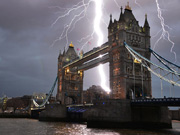 Global landmarks captured in striking shots
Global landmarks captured in striking shots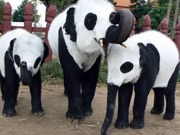 Thailand Elephants Disguised as Pandas Sparks Debates
Thailand Elephants Disguised as Pandas Sparks Debates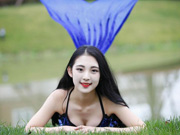 College girl dresses as mermaid to mark World Water Day
College girl dresses as mermaid to mark World Water Day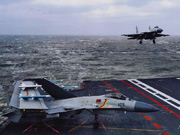 J-15 fighters in drill on Chinese aircraft carrier
J-15 fighters in drill on Chinese aircraft carrier 96-Year-Old Veteran Becomes Fashion Icon
96-Year-Old Veteran Becomes Fashion Icon Creative mother produces 232 unique breakfasts
Creative mother produces 232 unique breakfasts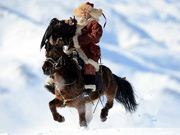 Charming folk customs in Kalajun Grassland
Charming folk customs in Kalajun Grassland A glimpse of ships and boats commissioned to PLA Navy in past 3 years
A glimpse of ships and boats commissioned to PLA Navy in past 3 years